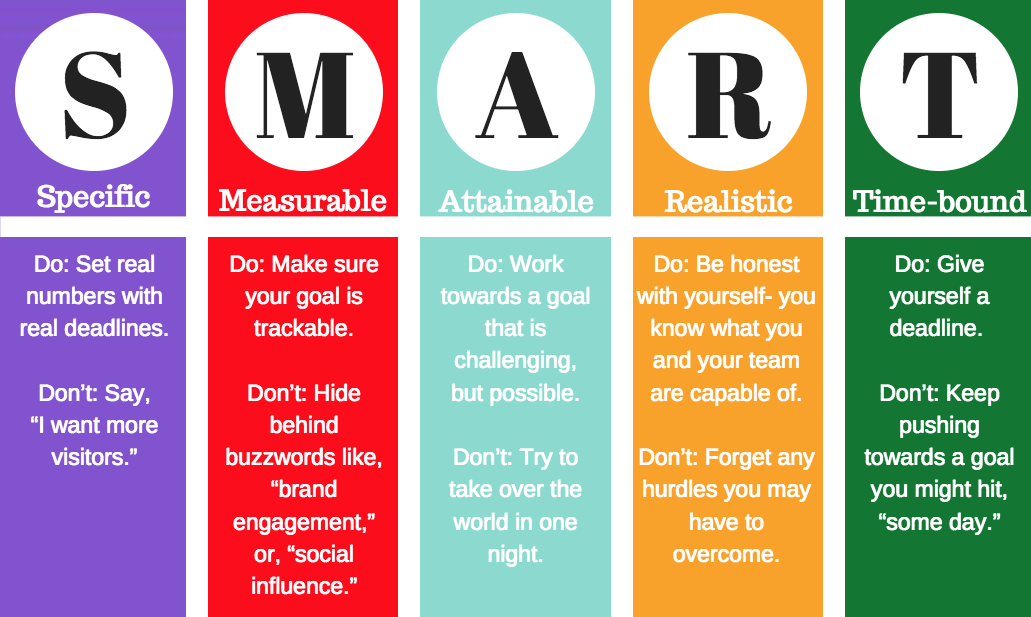Social Media and Business Strategy
What is a strategy? “Strategy is a long-term plan of action designed to achieve a particular goal or set of goals” (Wise.L). It is important to understand that social media is not a strategy but it is more so a tactic that can be used to advertise and further one’s business.
Ansofs Matrix consists of four strategic options which are the following:
- Market penetration– businesses sell existing goods and services to existing customers.
- Products development– businesses develop their existing goods and services and sell to their existing customers.
- Market development– businesses add on to their existing products new features.
- Diversification- businesses develop new products and expand their target market.
In order to measure social media marketing ROI, you need to be able to understand their direction in which you would like to head which then will help you to determine what tactics to use. After you have figured out the direction you would like to go in when it comes to the social media marketing and have you have chosen your tactics now you have to consider the measurement of the social media marketing Measuring will help you determine where you are lacking and what you need to work on. When it comes to measuring, it is not only about measuring the numbers of followings, likes, picture, words but also the measurement of how your audience is impacted.
Setting SMART Objectives
Specific- When setting goal and objective you must make sure your goals are specific
Measurable- Your goals and objectives need to be measurable in order to be able to answers questions such as “who, what, where, why”?
Achievable-Your goals have to be achievable, and what is meant by achievable is that they have to be realistic and attainable
Relevant- Goals that have the specific target audience in mind
Time- Lastly time, which means your goals and objectives much have a specific time frame within which you would like you to achieve them

What is Social Media ROI?
Social media marketing can get very costly due to the fact that most of the social media advertising relies on networking and connections and is heavily focused on brand representation.
AIDA Model– “Identifies stages an individual goes through during the buying process”(Wise.L, 2017)
Awareness- focuses on generating awareness
Interest- Once awareness has been generated the focus shifts on getting consumer interesting the product and or services
Desire- developing the desire to purchase
Action- And last but not least getting customers to act on their desires which is taking an action to purchase
Metrics
Vanity metrics– focuses son measuring the likes, following on social media, they are easily measurable however they do not provide information on what the issues are and how to fix them. Metrics that should be focused on are the volume, engagement, and traffic. Measurements of social media are important to “attract, retain, and convert potential customers” (Wise.L, 2017).

There are social media advertisements that are costly which falls into the category of the paid advertisement and there are also social media advertisements which do not require monetary value and can be achieved through the usage of social media but they are time to consuming.
Social Media Metrics
When it comes to volume, quality is more important than quantity. If you have a large following but the majority of the followers are not the audience that you are trying to reach and target that is when it becomes an issue. In order to make sure that majority of the volume that you have on the social media, you need to have a specific content which would attract your target audience.

Measurement Tools
When it comes to measurement tools, all of the social media websites such as LinkedIn, Twitter, Instagram, and Facebook have their own sections of the analytics where you can track the activity of your social media platform which shows things such as number of visits that you have had this week, the increase or decrease of the numbers of followers and so on. With such analytics, you are able to determine the areas of your social media platforms that need to be worked on.
Analyzing Social Media ROI
What does ROI mean? ROI stands for Return on Investments- “ Value organization derives from investing in a piece of marketing activity which helps to measure performance, and profit” (Wise.L, 2017). Keeping in mind that ROI is not a part of vanity metrics. ROI is one of the ways to know what is and what is not working which gives you an insight of what areas need improvement and need to be focused on more than the others.
Calculate Social Media Marketing ROI?
Calculating social media marketing ROI is simple if you have set goals, and use the right platform for your target audience. In order to calculate social media marketing ROI, you are going to need to follow the equation below, but another way that ROI can be calculated is by using Google Analytics.
Social Media ROI=
Revenue from social media – Cost of social media activity
Cost of social media activity
Benefits of Social Media
There are many benefits that social media provides to the business, but some of the most important ones are the ability that social media gives to us and business to communicate their products and services as well as the ability to gain exposure and advertise the business and lastly most importantly is the ability to communicate with your audience and gain insights and instant feedback.
Conclusion
It is inevitable that social media marketing is widely used by businesses to communicate and advertise their products and services, even though I myself use social media for many reasons whether it be when I am looking for reviews of certain business or in search of employment, having said that I never realized how important ROI was and how simple it was to measure ones ROI and the tools that are available to us to measure our own social media ROI’s.
Reference
Wise.L. (2017), Social Media Marketing ROI
Retrieved from:
https://www.lynda.com/HootSuite-tutorials/Social-Media-Marketing-ROI/504398-2.html








